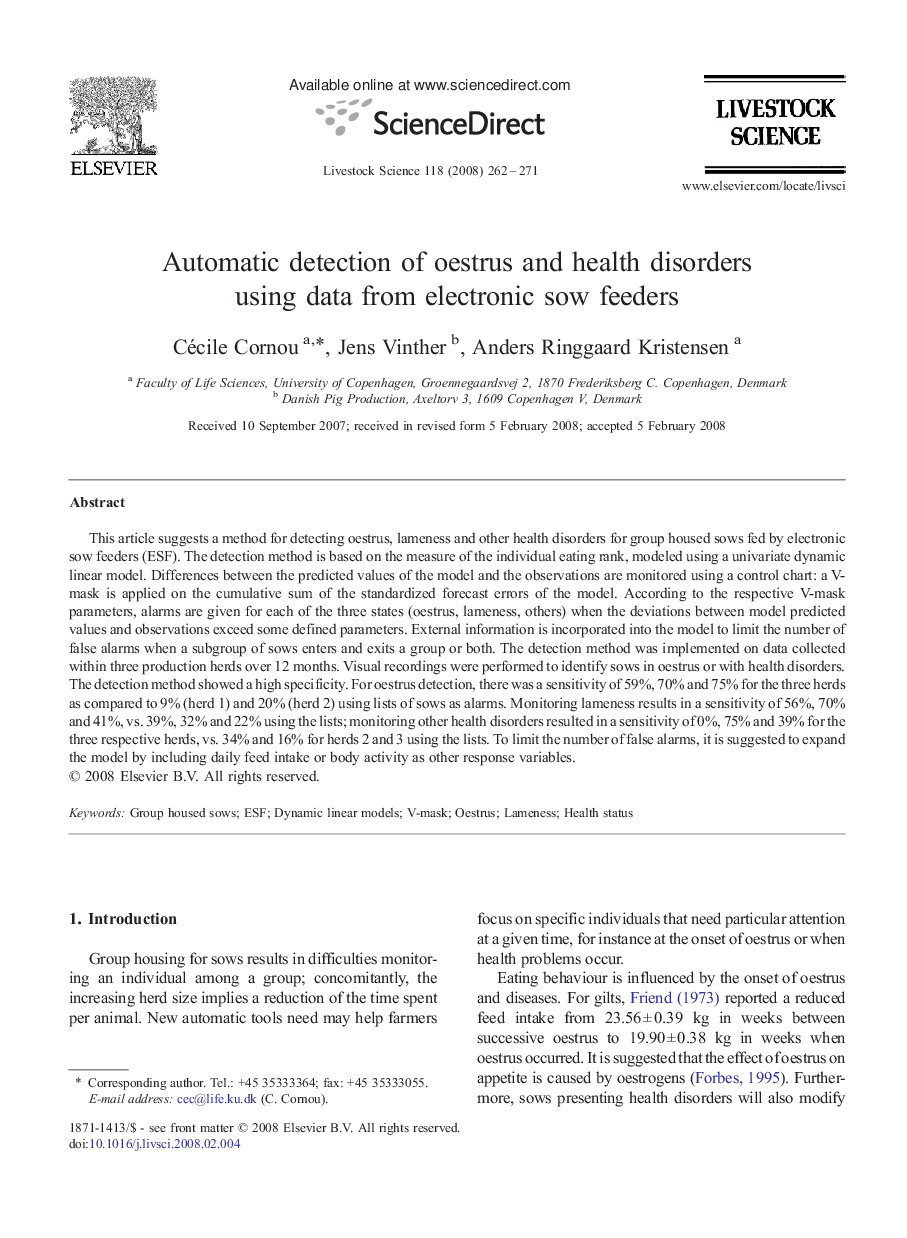| Article ID | Journal | Published Year | Pages | File Type |
|---|---|---|---|---|
| 2448397 | Livestock Science | 2008 | 10 Pages |
This article suggests a method for detecting oestrus, lameness and other health disorders for group housed sows fed by electronic sow feeders (ESF). The detection method is based on the measure of the individual eating rank, modeled using a univariate dynamic linear model. Differences between the predicted values of the model and the observations are monitored using a control chart: a V-mask is applied on the cumulative sum of the standardized forecast errors of the model. According to the respective V-mask parameters, alarms are given for each of the three states (oestrus, lameness, others) when the deviations between model predicted values and observations exceed some defined parameters. External information is incorporated into the model to limit the number of false alarms when a subgroup of sows enters and exits a group or both. The detection method was implemented on data collected within three production herds over 12 months. Visual recordings were performed to identify sows in oestrus or with health disorders. The detection method showed a high specificity. For oestrus detection, there was a sensitivity of 59%, 70% and 75% for the three herds as compared to 9% (herd 1) and 20% (herd 2) using lists of sows as alarms. Monitoring lameness results in a sensitivity of 56%, 70% and 41%, vs. 39%, 32% and 22% using the lists; monitoring other health disorders resulted in a sensitivity of 0%, 75% and 39% for the three respective herds, vs. 34% and 16% for herds 2 and 3 using the lists. To limit the number of false alarms, it is suggested to expand the model by including daily feed intake or body activity as other response variables.
